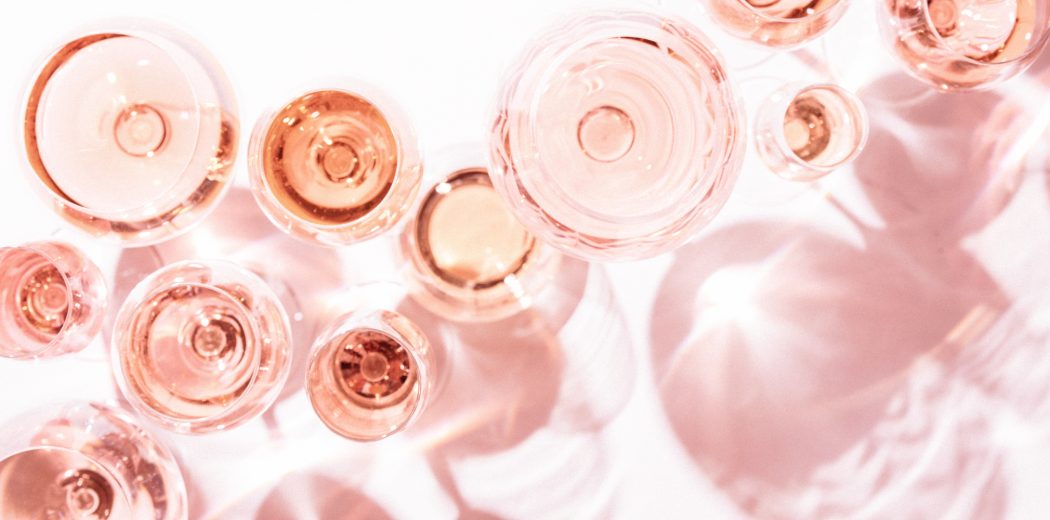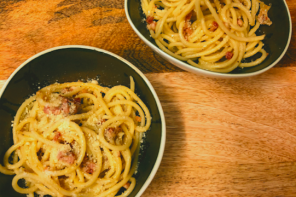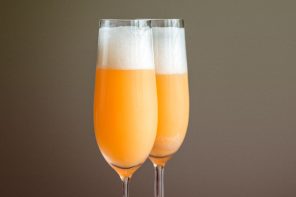Despite rosé’s unfathomable popularity, there’s a lot of misinformation out there about it. But if you’re going to drink it like water, then we feel like it’s only right for you to get your facts straight about pink wine.
Rosé is White Zin
Pink wine got a bad reputation after the White Zin craze of the ‘80s, but that stuff wasn’t the rosé we drink today and doesn’t mean all pink-hued wine sucks. Word of advice, if you’d like to avoid drinking these sticky sweet pink wines, steer clear of anything also sold at gas stations.
It’s made by mixing red and white
Although blending juice from different grapes is a widely used winemaking technique, blending together red and white juice doesn’t explain how rosé gets its light color. Rosé comes in countless shades of pink and there are a few methods of production to bring them about.
Saignée: this method was accidentally discovered when winemakers were attempting to create a more concentrated red wine which was done by “bleeding off” some of the juice after it sat with the skins and seeds. The “bled off” juice was still good to use and already pigmented, so after a little aging, voilà! It became rosé!
Skin Contact: this is essentially how red wine is made. The grapes are pressed and left to sit with the skins and seeds which causes the juice to become more pigmented with time. Rosé juice spends less time with the skins and seeds than it would if destined to become red wine.
Vin Gris: is the direct pressing of red grapes. Because this juice has lived within red grape skins, it’s already slightly pigmented so it doesn’t have to sit with the skins or seeds after it’s been pressed. This technique is only used to make the lightest rosés (like those from Provence).
Good rosé only comes from Provence
The birthplace of rosé is Provence, so there’s no doubt that some of the most delicious rosés come from this area of France, but quality pink wine can be found in almost every winemaking region in the world. From Oregon to Austria and even South Africa, there’s plenty of deliciously dry rosé out there just waiting to be discovered!
Rosé is only for the summer
Yes, we know rosé is “summer water” and it’s best enjoyed as a way to cool down during the balmy summer months, but its gatorade-level quenching qualities doesn’t mean it can’t also be enjoyed the other nine months of the year. Part of the appeal of rosé is its incredible versatility when pairing with foods. From a lobster salad to a meat lover’s pizza, it’s easy-going just like Matthew McConaughey in “Dazed and Confused.” So why stop after the summer months have ended?
Rosé is not meant to be aged
Generally, the rule is not to age rosé as most are ready to drink immediately, but there are a few out there that are the exception to this rule. Within France’s famed rosé region of Provence lies Bandol, a region that’s known for making rosés with Mourvèdre grapes. This varietal improves with time, so if you find it in a rosé, that particular bottle can hang out a little longer on your wine rack.
Cheap rosé is bad
As if we needed another reason to be obsessed with rosé, we love that we really don’t have to spend more than $15 on a bottle and know it’ll still be good. Because rosé has a relatively quick turnaround production time and doesn’t have to sit around in tanks to age, the price is lower even for high-quality juice. So, if you see a price tag for $12, don’t hesitate. Drink the $12 pink juice.
Rosé is sweet
It’s time to get the White Zin image out of your head. The majority of rosés are dry with a crisp acidity and are pleasantly refreshing, which is why everyone drinks it like it’s grown-up grape juice. That being said, there are rosés out there with noticeable residual sugar, but you’re far more likely to come across dry pink than sweet.
Dark rosés are sweet
Someone somewhere at some point said darker rosés are sweeter wines. This is fake news. Darker rosés get their bold color from mingling a little longer with the skins and seeds after being pressed. That’s it. These wines also tend to be more full-bodied because of the extended skin contact. Don’t be afraid of dark rosés, they’re more complex and just might be a pleasant change of pace after all the light, easy-drinking pale pink counterparts you’ve been chugging all summer.
Rosé is a new thing
While Americans are just now getting on the rosé bandwagon, the rest of the world has been on it for some time now and is wondering what we’ve been doing. Yep, rosé has been around for quite a while. In fact, there’s evidence pink wine might’ve been one of the original styles of wine made in France thousands of years ago.








